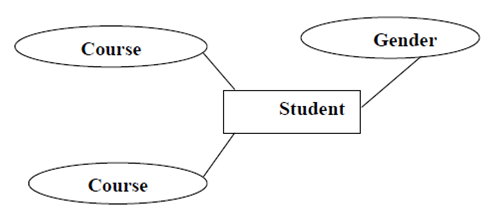Attributes
An attribute is a property of an entity which distinguishes it from other entities and gives information about the entity. An attribute kind is a property of an entity type. For instance, the attributes of the entity Student are Course Name, Gender and Course Number. In an ER diagram you represent attributes as ellipses and label them with the name of the attribute.

The second main data-modeling concept which you must understand is that of attributes. Attributes are further characteristics or information described for an entity.
An entity’s attributes don’t describe an entity, but they give additional information about an entity which may be useful elsewhere. The concept of a teacher can be described definition without knowing the teacher’s salary, name or educational level (attributes). Although, knowing nothing about their teacher does the college little good and that is where the attributes come in handy.
Review the case study and the entities elaborate in the previous section. Try to list some attributes for every entity, then review the following list of possible attributes for each entity:
• Teacher: Name, gender, social security number, salary, address, years tenured
• Student: Name, gender, social security number, college address, billing address, class level, grade point average
• Course: Course number, course name, prerequisites
• Class: Course number, scheduled meeting times, assigned teacher, scheduled room, maximum enrollment, students enrolled.
• Class Session: Course number, students attending, date and time of session.
There is no set trick or method for discovering attributes of a particular entity. Commonly, brainstorming on the different characteristics of an entity is sufficient. If you search that you are having difficulty, you may need to check your definition of the entity to see if it is specific enough.